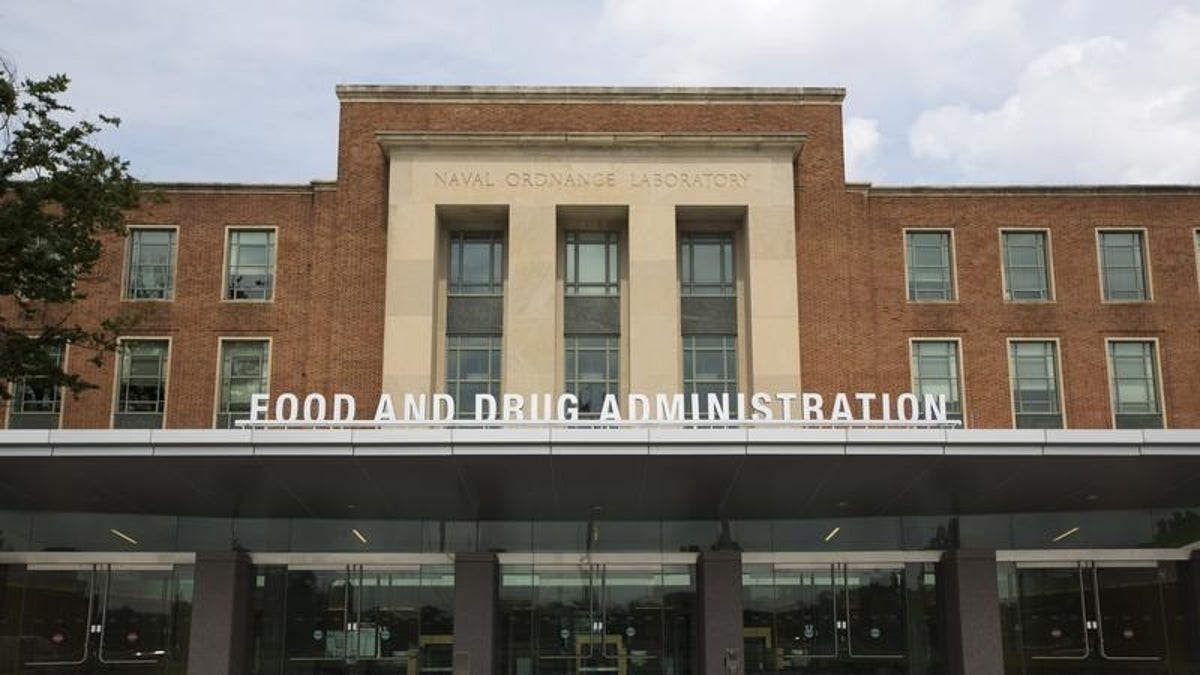
A view shows the U.S. Food and Drug Administration (FDA) headquarters in Silver Spring, Maryland August 14, 2012. REUTERS/Jason Reed (Copyright Reuters 2015)
What the Food and Drug Administration calls a 'breakthrough' drug is often not the same as what a layperson would call a breakthrough, a new study shows.
The FDA uses the term more often, and for smaller advances, than people use it colloquially, and this may lead patients to have unwarranted confidence in new drug claims.
As the researchers on the new study describe it, the FDA Safety and Innovation Act, passed in 2012, allows the FDA to give breakthrough designation to any drug treating a serious or life-threatening condition that "may demonstrate a substantial improvement over existing therapies" for one clinical endpoint, or outcome, in preliminary evidence.
"These clinical endpoints can be surrogate outcomes and don't have to be a direct outcome of the disease," said coauthor Tamar Krishnamurti, a research scientist at Carnegie Mellon University in Pittsburgh.
"For example, cholesterol can be a surrogate outcome for measuring the effectiveness of a drug to treat heart disease," she told Reuters Health by email.
Many people with heart disease have high cholesterol levels, but not all people with heart disease do - and many people with high cholesterol levels have no heart disease at all, she said.
The researchers recruited almost 600 people online through Amazon's Mechanical Turk and randomly assigned them to read one of five short descriptions of a recently approved drug for metastatic lung cancer with 'breakthrough' designation.
One vignette only described the facts about the drug - including the size of the drug trial, and the findings that about half of the patients had their tumors shrink while on the drug, that the effects lasted for seven months, and that side effects included diarrhea, nausea and vomiting - without using the term breakthrough.
A second vignette used these facts and included the term "promising," while a third used the word "breakthrough."
"While 'breakthrough' is an official designation that may lead to accelerated drug approval, 'promising' is just a descriptor term that FDA has used in about half of its press releases to describe breakthrough drugs," Krishnamurti said.
The fourth vignette included language required for FDA labeling, clarifying that continued approval of the drug may be contingent on further trials confirming its effectiveness.
The fifth vignette changed "may be contingent on" to "is contingent on."
The participants judged the drug's benefits, harms and strength of evidence based on the vignette they were assigned.
While 11 percent of respondents who read the facts-only description rated the drug as very effective or completely effective, about 25 percent of those who saw the 'promising' or 'effective' descriptions said the same. More of the second and third group of respondents also believed the evidence supporting the new drug was strong or very strong.
And only 10 percent to 16 percent of people who read the fourth and fifth vignettes, which added further explanations and contingencies, were likely to believe incorrectly that the drug was proven to save lives, compared to 31 percent of those who read the "breakthrough" vignette, according to a report in JAMA Internal Medicine.
At the end of the survey, respondents read two descriptions of a drug and were asked which they would take for a life-threatening condition. One description included the word breakthrough and the other did not. More than 90 percent of people chose the breakthrough drug.
"Given that 'breakthrough' is an official designation mandated by Congress, FDA is required to refer to this category of drugs as such," but the FDA is not required to use terms like "promising," Krishnamurti said.
"Breakthrough" is an aspirational term, chosen for the 2012 act to help expedite the new drug approval process, which many criticize as slow although there is research indicating that the process is not slow, as Drs. Joseph S. Ross and Rita F. Redberg note in an editorial published with the study.
The term breakthrough "may cause people to have unwarranted confidence about these drugs, which could prevent them from making a fully informed decision about whether to take the drug or not," Krishnamurti said.
Simple, clearly worded disclosures can help mitigate some of the incorrect judgments associated with these designations, she said.
"To protect patients from spurious hopes for miracle cures, Congress and the FDA should abandon the adoption of terminology like breakthrough and focus on strengthening the evidentiary requirements for meaningful clinical data to ensure the promise of new drugs and devices," Ross and Redberg write.
